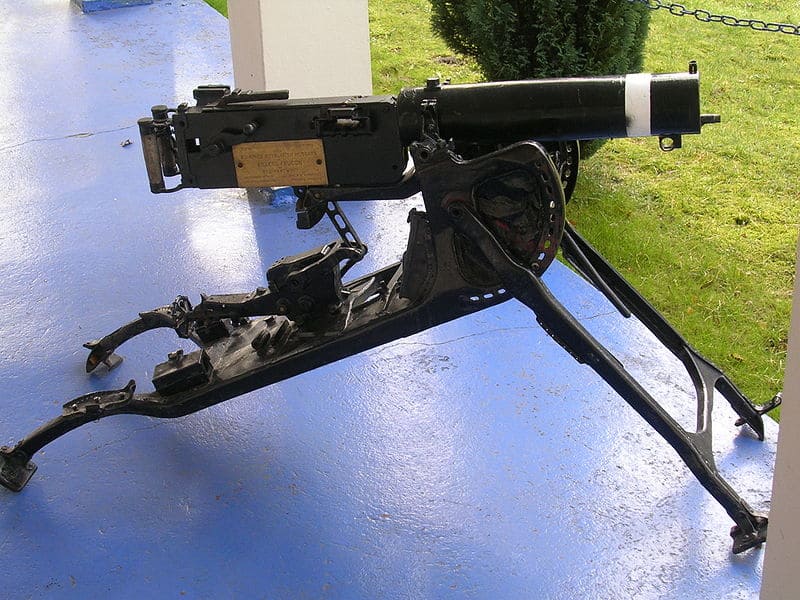Orders were received at 1 pm on the 27th of March that ‘B’ and ‘D’ Squadrons were to attack and take the village of Villers Faucon at 5 pm with the assistance of a Howitzer Battery, X Battery, R.H.A., and two armoured cars. The Canadian Cavalry Brigade was to attack the villages of Guyencourt and Soulcourt at 5 pm ‘B’ Squadron was under Captain Weldon and ‘D’ Squadron under Major Van der Byl.
The latter had the two armoured cars under his command, and the two batteries were to support the attack by firing a concentration on the village and lifting to the ridge beyond at 5 pm The information was that the village of Villers Faucon was held by a German rear guard of sixty strong with five machine guns.
The country was open downland with no wire so far as was known.
Major Van der Byl at once collected troop leaders and went off to make a reconnaissance, but German artillery fire rendered this impossible. The outcome then was that he was forced to make the plan laid down on the map. A conference with ‘B’ Squadron leader and the armoured car commander resulted in the following:
(a) The armoured cars were to start in their own time, advance rapidly down the road leading to the southwest end of the village, arriving there as the artillery lifted. Then they were to act in the village according to the situation.
(b) ‘B’ Squadron was to gallop to the area about the two copses shown in the sketch, and to come into dismounted action, and to support by fire the mounted attack of ‘D’ Squadron from the south. As soon as ‘C’ Squadron was seen to be successfully approaching the village, ‘B’ Squadron was to move mounted against the north side of the village.
(c) ‘D’ Squadron was to start at a trot and move east on a line halfway between Roisel and Villers Faucon, covered by one troop.
The squadron formation was two troops in column at about an interval of 75 yards, and the remaining troop was also in column 50 yards in the rear. On crossing the Villers-Faucon-Roisel road, the leading troop was to swing to the left, gallop towards the village and dismount for action at close range.
Its position was to be the rallying point if the village was unexpectedly found to be protected by wire. It was to remount and come into reserve as soon as the troops detailed to gallop to the village were seen to enter it. The next two troops, after crossing the road, were to swing to the left and gallop to the village, each extended in line.
The right troop was to make for the southeast entrance, the left troop for the centre, and the remaining troop to follow prepared to back up the first troop able to secure a foothold in the village.
After careful consideration as concentration was to lift at S pm, eight minutes were allowed, and ‘D’ Squadron started off at 4.52 pm in a snowstorm.
All went more or less according to plan with two main exceptions:
(1) The armoured cars were both stuck in a huge crater and were put out of action at the west entrance to the village.
(2) In consequence of fire from the high ground east of the railway and posts placed about the railway, the right troop was unable to keep as wide as was intended, and failed to enter the east end of the village, thus preventing the capture of some of the rear guard, who were thus able to withdraw.
One cause of the disaster to the armoured cars was that the Germans employed their armour-piercing bullets, which went right through the cars’ armour, and all three of the crew of the leading car were knocked out. The action of the cars was, however, well-timed, for they drew the majority of the fire of the enemy machine guns, and thereby enabled two troops of ‘D’ Squadron to enter the village with very few casualties.
Having first captured the west half of Villers Faucon, ‘D’ Squadron then fought dismounted through the ruins, and with the assistance of ‘B’ Squadron. coming in from the north, the village was cleared and held for the night.
Two enemy machine guns were captured intact and parts of another, one officer, and 15 other ranks were taken, prisoners. The regiment had only two killed and Lieutenant Hornby and a few wounded.
Most of the regiment’s casualties occurred from shell fire after they had occupied the village. The German officer, when interviewed, laid special stress on the point that his defensive measures simply contemplated preparations against a slow infantry attack and he added that he would certainly have rendered such an attack both slow and difficult, resulting in many casualties to our side, The speed with which the squadrons affected their entrance from the south and north completely upset his plans, which he had no time to alter.
Naturally, this operation redounded to the credit of the regiment, which received cordial congratulations on its success.
For their gallant conduct on this occasion, Major Van der Byl received the D.S.O. and Private Garvey the M.M.


